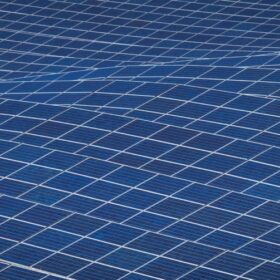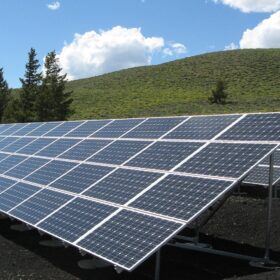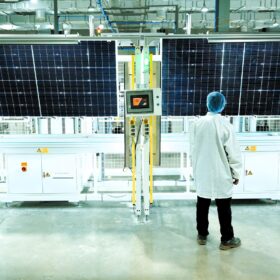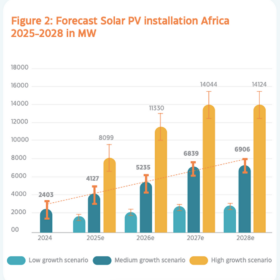Global solar installations could reach 1 TW next year
BloombergNEF reports the world installed nearly 600 GW of solar power in 2024, closely aligning with projections that annual global solar installations will surpass 1 TW within the next few years. Although projections for 2025 currently fall short of that pace, early forecasts often underestimate actual deployment.
Solar exceeds 10% of U.S. electricity generation capacity
Solar dominates project queues through 2028, said data from the Federal Energy Regulatory Commission (FERC).
Renewable energy hiring to surge around 18% in FY25 as demand for skilled professionals rises, finds Teamlease Services
The demand for specialized skills continues to rise, with an emphasis on engineering, project management, data analytics, and sustainable energy solutions. Job roles such as solar panel installers, energy auditors, and operational support professionals are in demand.
Regulatory reforms needed to accelerate clean energy adoption, says Primus Partners’ new report
A new report by Primus Partners highlights key regulatory reforms required to accelerate clean energy adoption, stabilize distribution companies (discoms) and boost investor confidence in India’s power sector.
Indian solar manufacturers must prepare for evolving trade environment, says Rubix report
While Indian solar PV exporters may benefit in the short term from China’s reduced access to the US market, they must prepare for potential disruptions, both from Chinese price competition and possible US tariffs on Indian goods, says a new report by Rubix Data Sciences.
The role of solar in India’s 500 GW renewable energy target by 2030
As of Feb. 28, 2025, India’s installed solar capacity stands at approximately 102.57 GW, contributing significantly to its renewable energy mix. To meet the 500 GW target, solar energy will need to contribute nearly 300 GW.
Harnessing India’s rooftop solar potential: A crucial step towards achieving 600 GW clean energy target by 2030
For India to achieve its 600 GW clean energy goal, rooftop solar must become a national priority. By learning from global success stories, addressing financial barriers, and implementing robust policies, India can unlock the full potential of decentralised solar energy.
Residential solar in USA declined 31% in 2024
Despite the down year, Wood Mackenzie forecasts the market to more than triple in size by 2035.
PM Surya Ghar Muft Bijli Yojana crosses 10 lakh installation milestone
PM Surya Ghar: Muft Bijli Yojana (PMSGMBY), the world’s largest domestic rooftop solar initiative, has achieved a historic milestone with 10 lakh homes now solar-powered as of 10th March 2025.
Africa’s solar capacity forecast to double over next four years
A report from the Global Solar Council says Africa’s solar deployment is set to accelerate in the coming years, but stresses that mobilizing finance and strong regulatory frameworks will be required to attract investors.















